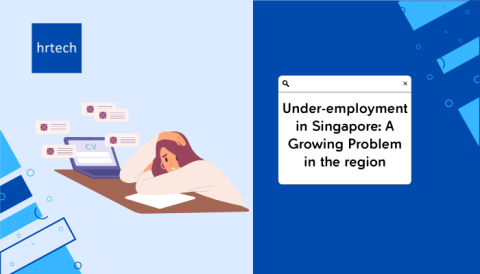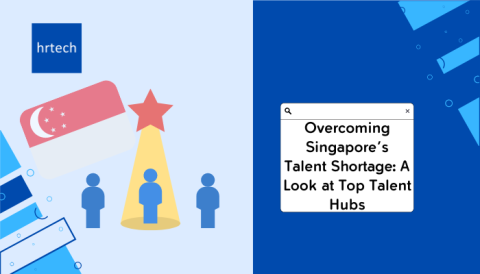Introduction
Blue-collar workers form the backbone of Singapore’s economy, driving key industries such as logistics, construction, manufacturing, and healthcare. Their contributions ensure the smooth functioning of vital services and infrastructure, yet the landscape of blue-collar hiring is evolving rapidly. Factors such as digitalization, an aging workforce, and shifting labor demands are reshaping the way companies recruit and retain workers.
As businesses adapt to new technologies and work models, understanding the future of blue-collar hiring becomes critical. Companies must stay ahead of these changes to secure a skilled workforce, maintain productivity, and address emerging challenges. This article explores key hiring trends, ongoing challenges, and what lies ahead for Singapore’s blue-collar job market.
Key Trends in Blue-Collar Hiring
The hiring landscape for blue-collar workers in Singapore is undergoing a significant transformation due to technological advancements, evolving worker expectations, and industry-specific demands. Employers are adjusting their recruitment strategies to meet these changes, ensuring they attract and retain a skilled workforce. Below are the key trends shaping the future of blue-collar hiring in Singapore.
1. Growing demand for skilled labor
Singapore’s economy is becoming increasingly reliant on skilled blue-collar workers, particularly in essential industries like logistics, healthcare, construction, and manufacturing. As the country pushes forward with automation and smart technologies, the need for specialized skills continues to grow.
Key Industries Driving Demand
- Logistics & supply chain:
The rise of e-commerce and global trade has led to a significant demand for warehouse workers, forklift operators, and supply chain specialists. According to Singapore’s Ministry of Trade and Industry (MTI), the logistics sector is projected to expand by 2-3% annually, requiring a steady influx of skilled workers who can manage inventory systems, automation tools, and last-mile delivery solutions. - Healthcare & aged care:
With Singapore’s aging population, demand for healthcare support staff such as nursing aides, patient care assistants, and medical technicians is increasing. The Ministry of Health (MOH) predicts that Singapore will require an additional 24,000 healthcare workers by 2030 to meet the growing needs of elderly care and medical services. - Advanced manufacturing & engineering:
Singapore is moving towards Industry 4.0, integrating robotics, AI-driven systems, and automation into the manufacturing process. As a result, traditional factory jobs are evolving, requiring workers skilled in machine learning, smart factory operations, and digital manufacturing systems. - Construction & infrastructure development:
With major government projects such as the Tuas Mega Port and the expansion of the MRT network, there is a growing demand for skilled electricians, welders, crane operators, and civil engineers. However, this sector faces challenges in attracting younger workers, making skills training and career incentives crucial.
Platforms like JobShine are increasingly important for connecting skilled workers with opportunities in these high-demand sectors.
2. The rise of the gig economy & flexible work
Traditional employment models are shifting as more blue-collar workers prefer flexibility over fixed, long-term contracts. The gig economy is gaining momentum, especially in transportation, logistics, and on-demand skilled labor, offering workers control over their schedules and work choices.
How the Gig Economy is Reshaping Blue-Collar Hiring
- On-demand platforms & freelance jobs:
Workers are increasingly opting for short-term, project-based roles through platforms like Grab, Lalamove, and Deliveroo. These jobs provide higher earning potential, flexible hours, and greater independence compared to full-time employment. - Temporary & contract-based work in skilled trades:
Industries such as construction and maintenance are seeing a rise in workers choosing contract-based roles, allowing them to take on multiple projects rather than committing to one employer. - Shift toward daily & weekly payouts:
Many gig workers prefer immediate or weekly payments over monthly salaries, prompting companies to adapt payroll structures to remain competitive.
A report found that a part of Singapore’s workforce is engaged in some form of gig work, and this number is expected to rise in the coming years. Employers must adapt by offering hybrid employment models that combine flexibility with job stability.
JobShine offers a wide array of flexible job options, catering to professionals who thrive in dynamic gig work environments.
3. Digital job portals & AI-driven hiring
Technology is revolutionizing the recruitment process, making hiring faster, more efficient, and data-driven. Digital job portals, AI-powered hiring tools, and automated screening processes are helping companies reduce hiring time and improve job matches.
How Technology is Changing Blue-Collar Hiring
- AI-powered job matching:
Platforms like FastJobs, JobShine, and Workmate leverage artificial intelligence to match job seekers with employers based on skills, location, and experience. This reduces the reliance on traditional job advertisements and speeds up hiring. - Automated screening & interviewing:
Companies are increasingly using AI-driven chatbots and automated assessment tools to screen candidates for relevant skills before inviting them for interviews. This reduces recruitment costs and shortens hiring cycles.
With more companies turning to AI and digital job platforms, workers must improve their digital literacy to navigate these new hiring channels effectively.
4. Focus on upskilling & training initiatives
As industries evolve, the gap between available skills and job requirements is widening. Employers and the government are investing heavily in upskilling initiatives to ensure that blue-collar workers are prepared for future job demands.
Major Upskilling & Training Programs in Singapore
- SkillsFuture Initiative:
The Singapore government launched SkillsFuture to provide subsidies for workers to enroll in vocational courses, technical certifications, and digital skills training. Many workers are using this program to transition into higher-paying, technology-driven blue-collar roles. - Industry Transformation Maps (ITMs):
These sector-specific roadmaps identify future skill requirements and provide structured training paths to help workers stay employable in industries like construction, healthcare, and logistics. - Public-Private Training Partnerships:
Many companies collaborate with training institutions to create customized learning programs. For example, automotive firms are training mechanics in EV (electric vehicle) maintenance, preparing them for the growing demand in Singapore’s push toward sustainability.
Employers who actively support training programs and offer on-the-job learning opportunities will have a competitive advantage in talent acquisition and retention.
5. Increased adoption of workforce analytics & predictive hiring
With the rise of big data and workforce analytics, companies are using predictive hiring models to make informed recruitment decisions.
How Data & Analytics are Improving Blue-Collar Hiring
- Predicting Labor Shortages:
Companies analyze historical hiring trends and economic indicators to forecast future labor shortages and plan recruitment strategies accordingly. - Performance Tracking & Employee Retention Insights:
Employers are using AI-driven workforce analytics to track employee performance, attendance, and engagement levels. By understanding patterns that lead to turnover, businesses can implement better retention strategies. - Optimized Shift Scheduling:
Workforce management platforms help reduce absenteeism and boost productivity by offering AI-powered shift scheduling that optimizes work hours based on peak demand periods.
With data-driven hiring becoming a key trend, businesses that invest in predictive workforce planning tools will gain a competitive edge in hiring and workforce management.
By staying ahead of these trends, companies can build a resilient and future-ready blue-collar workforce in Singapore’s evolving job market.
Now, while those trends are fascinating, let’s dive into the challenges that businesses face in this dynamic hiring landscape.
Major Challenges in Blue-Collar Hiring in Singapore
While the demand for blue-collar workers continues to rise, employers face significant challenges in attracting, training, and retaining skilled labor. These challenges stem from skills shortages, high turnover rates, digital transformation hurdles, and evolving worker expectations. Below are the most pressing challenges in Singapore’s blue-collar hiring landscape and potential solutions to overcome them.
1. Skills shortages & the need for continuous upskilling
The Problem:
Many industries, particularly healthcare, logistics, and advanced manufacturing, require workers with specialized skills. However, there is a growing gap between the skills job seekers possess and those needed by employers.
Why It’s Happening:
- Automation and smart technologies are transforming traditional blue-collar roles. Workers who lack training in digital tools and machinery struggle to keep up.
- A declining interest in vocational jobs among younger generations has led to a shortage of fresh talent.
- Many workers rely on outdated skill sets, making them less competitive in the job market.
Possible Solutions:
- The SkillsFuture initiative offers government-funded training programs to help workers acquire in-demand skills.
- Employers can implement on-the-job training programs to upskill employees in automation, digital logistics, and smart manufacturing systems.
- Public-private partnerships, such as those between polytechnics and industry leaders, can create structured career pathways for young workers.
Key Insight: The companies that invest in reskilling and continuous training will have a stronger workforce and lower hiring costs in the long run.
2. High employee turnover & retention struggles
The Problem:
Many blue-collar jobs in Singapore experience high turnover rates, leading to constant hiring cycles and increased costs for employers.
Why It’s Happening:
- Low wages and tough working conditions make it difficult to retain workers.
- The gig economy provides more flexible opportunities, making full-time employment less appealing.
- Workers often switch jobs for better pay, benefits, or work-life balance.
Possible Solutions:
- Companies can introduce retention bonuses, performance incentives, and career progression opportunities to keep employees engaged.
- Offering more flexible work arrangements (such as rotating shifts and shorter workweeks) can improve job satisfaction.
- Creating employee wellness programs and focusing on better workplace conditions can increase long-term loyalty.
Key Insight: Retention strategies need to go beyond salary increases—offering growth opportunities and better working conditions can create a more committed workforce.
3. Challenges in adapting to digital transformation
The Problem:
Despite advancements in AI, automation, and digital hiring platforms, many companies and workers struggle with digital adoption.
Why It’s Happening:
- Some blue-collar workers lack digital literacy, making it difficult for them to adapt to new tools and automated processes.
- Employers are hesitant to invest in expensive digital systems without clear short-term returns.
- Resistance to change among older workers slows down digital integration.
Possible Solutions:
- Employers can provide basic digital training to ensure workers are comfortable using automated systems and AI-driven tools.
- Government initiatives, such as Singapore’s Industry Transformation Maps (ITMs), support businesses in integrating smart technology.
- Implementing gradual digital adoption strategies, where automation is introduced step by step, can help ease resistance.
Key Insight: The companies that embrace digital transformation while supporting workers through the transition will gain a competitive advantage in productivity and hiring efficiency.
4. Rising labor costs & foreign workforce restrictions
The Problem:
Labor costs are rising in Singapore, and government restrictions on foreign worker quotas have made hiring more complex.
Why It’s Happening:
- Singapore is increasing minimum wages and labor protections to improve working conditions.
- Government policies are aimed at reducing reliance on foreign workers and promoting local employment.
- Companies struggle to fill positions when local workers are unwilling to take on physically demanding roles.
Possible Solutions:
- Employers can explore automation and AI-driven processes to reduce reliance on manual labor.
- Offering competitive salaries and better job perks can make blue-collar roles more attractive to local workers.
- Government grants and subsidies help businesses offset labor costs when hiring and training Singaporean workers.
Key Insight: Businesses that optimize workforce planning and invest in automation will be better positioned to handle labor shortages and rising costs.
JobShine ensures ease of use with its user-friendly interface, helping blue-collar workers overcome digital adoption hurdles.
Alright, now that we’ve tackled the hurdles, let’s chat about what the future holds for blue-collar hiring in Singapore.
The Road Ahead for Blue-Collar Hiring in Singapore
As Singapore’s economy continues to evolve, the future of blue-collar hiring will be shaped by technology, workforce policies, and changing labor demands. Employers must prepare for a more digital, flexible, and skills-driven hiring environment.
1. Increased reliance on automation & AI
With labor shortages and rising costs, automation and AI-driven tools will play a greater role in blue-collar jobs. From smart logistics systems to AI-powered job matching, businesses that invest in these technologies will gain a competitive edge.
What to Expect:
- AI-driven hiring platforms will streamline recruitment, matching workers to jobs faster and more accurately.
- Robotics and automation in manufacturing, logistics, and construction will reduce reliance on manual labor.
- Workers will need to adapt to tech-enabled roles, requiring continuous digital training.
2. The rise of a more skilled and mobile workforce
To keep up with industry demands, blue-collar workers will need stronger technical skills and digital literacy. As a result, upskilling initiatives and training programs will become even more critical.
Key Developments:
- Government-led initiatives like SkillsFuture and Workforce Singapore (WSG) will continue to push for upskilling and reskilling.
- Companies will invest more in in-house training and career development programs to retain talent.
- The gig economy and flexible work arrangements will give workers more mobility and job opportunities.
3. Policy & workforce adjustments
Government regulations will continue to influence blue-collar hiring policies, particularly around foreign worker quotas, wages, and job security. Businesses will need to balance local hiring efforts with productivity-focused automation.
Expected Changes:
- Stricter foreign worker policies will increase reliance on local talent and automation.
- Wage growth and labor protections will improve job conditions but raise employer costs.
- Companies that offer better benefits, career growth, and flexible work options will attract and retain talent more effectively.
As digital transformation continues, platforms like JobShine become indispensable partners in building a future-ready workforce.
Conclusion
The future of blue-collar hiring in Singapore is evolving rapidly, driven by technological advancements, shifting workforce expectations, and government policies. To stay competitive, businesses must embrace digital transformation, integrating AI-driven recruitment tools and automation to enhance efficiency.
By proactively addressing these trends and challenges, businesses can build a resilient, skilled, and future-ready workforce, ensuring long-term success in Singapore’s evolving labor market.
For businesses looking to streamline their hiring process and job seekers searching for the right opportunities, JobShine offers a cutting-edge AI-powered job platform that simplifies recruitment. With advanced job-matching technology and chatbot integration on WhatsApp, Messenger, and Telegram, JobShine makes job searching and hiring faster and more efficient.
Visit JobShine today to experience a smarter way to hire and get hired!




